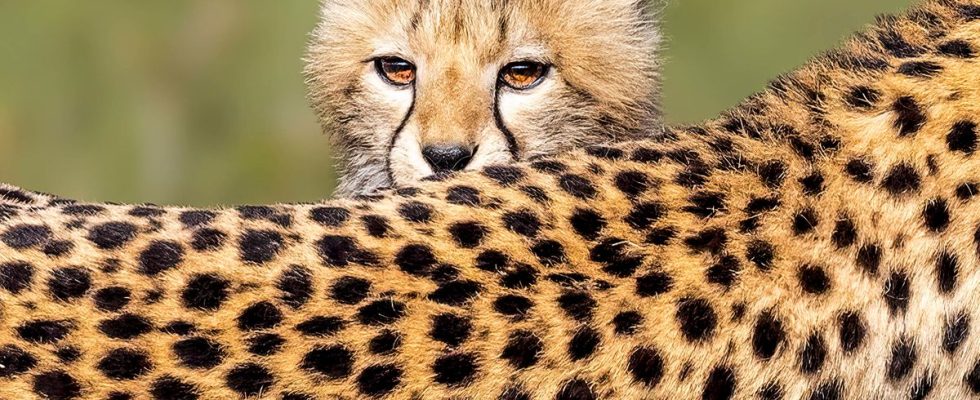Last year, a Frenchman brought home a addax that he had just “shot” in Africa. Although few know about this spotted-snouted antelope, those lucky enough to observe one are even rarer. The addax is a “critically” endangered species, with at most around a hundred specimens recorded in the wild. However, the person who probably had the head of his trophy stuffed to hang it on his wall has committed no offense. He didn’t poach, he didn’t circumvent the system. He just asked for an exemption which the administration granted him.
“When I talk about it around me, people are surprised that it can exist,” says Sandra Regol, environmentalist deputy for Bas-Rhin. This Thursday, February 1, she will defend in the hemicycle her “transpartisan” bill (co-signed by Renaissance and Modem deputies) aimed, not at banning the hunting of endangered species in distant regions of southern Africa – that would be interfere in the politics of these nations – but to “prohibit the import/export of their remains”. By then depriving their owners of the joy of showing off the results of their exploits. “If people want to hunt, that’s their freedom. On the other hand, taking away the remains of endangered animals is something that we can no longer tolerate,” maintains the rapporteur of the bill.
Who are the trophy hunters who love authentic cheetah rugs?
The Netherlands, Finland, and most recently Belgium, have already legislated. Italy is working on it. But, suffice to say, if it is adopted in France, this modification of the Environmental Code will not spoil the holidays for many people. “Perhaps a hundred French people per year,” says the MP. “It is very complicated to know the exact number of hunters because most bring back several trophies. But we are talking about recreational hunting, and only recreational, practiced by wealthy or very wealthy people, which concerns many endangered species,” explains Capucine Meyer, trophy hunting expert from the NGO Humane Society International (HSI).
“The price of these hunts reaches tens of thousands of euros on average but when you want something that sets you apart from others, that is to say speculating on rarity, therefore killing a species which is really very, very in danger, there we have to count in hundreds of thousands of euros per person and per animal,” says Sandra Regol.
To do what ? “Cheetah rugs – France is the European champion in importing cheetah remains – ashtrays made from rhino horn,” lists the ecologist. “Skin bedside rugs, even hippopotamus paw lamp bases,” adds Capucine Meyer.
What are the figures known for France?
Associations estimate the number of animals killed each year for their trophies at 200,000. For France, the official figures the most telling, brought together by HSI on the basis of the exemptions issued, are those which cover the period before Covid-19, from the time when we traveled without constraints. From 2014 to 2018, France legally imported 752 hunting trophies of 36 species listed by the Convention on International Trade in Endangered Species of Wild Fauna and Flora (Cites). 46% of these remains belong to three species – elephants, lions, leopards – of the “Big Five”, emblematic for hunters. Over the period, 210 leopards, 121 African elephants, five polar bears and even a very rare black rhino crossed the border, obviously dead. “France was even the only country in the European Union to import narwhals,” notes Capucine Meyer.
No more lions, however, since 2015 and the global emotion aroused by the death of the lion Cecil, killed by an American dentist. Ségolène Royal, then Minister of Ecology, immediately stopped its importation.
Why is this ban less consensual than it seems?
For her bill, after conducting numerous hearings, Sandra Regol wanted to rely on “scientific knowledge” without playing on the emotional register of “cute species” (like the adorable pygmy hippopotamus) under threat. She confined her request for a ban on the import/export of trophies to animals listed in Appendices I and II of Cites, those classified as endangered and those which are the most endangered. There we find the cheetah, the African elephant, the Eurasian lynx and the polar bear. But after discussion in committee on Wednesday January 24, she had to abandon a broader list. Despite the few hunters concerned, and an Ifop poll dating from last June where 91% of French people said they were in favor of this ban, she was even surprised by a debate “less consensual than it seems”.
MEPs notably mentioned a 2016 study, distributed by the International Union for Conservation of Nature (UICT) and on which the hunting lobby relies. She explains that in the main southern African countries concerned (Zimbabwe, Namibia and South Africa for example), trophy hunting has a positive influence on the conservation of species. For example, it would allow a greater financial windfall to be devoted to it and, by giving market value to the animals, it would encourage local populations to protect them. “Trophy hunting represents on average 0.04% of the GDP of these countries, compared to 15% in Kenya for photographic tourism,” retorts Capucine Meyer. “Trophy hunting provides a living for between 15,000 and 18,000 people across the African continent, mostly paid below the average salary,” says Sandra Regol. She prepares her arguments for a debate during which some might finally want to bare their claws.

